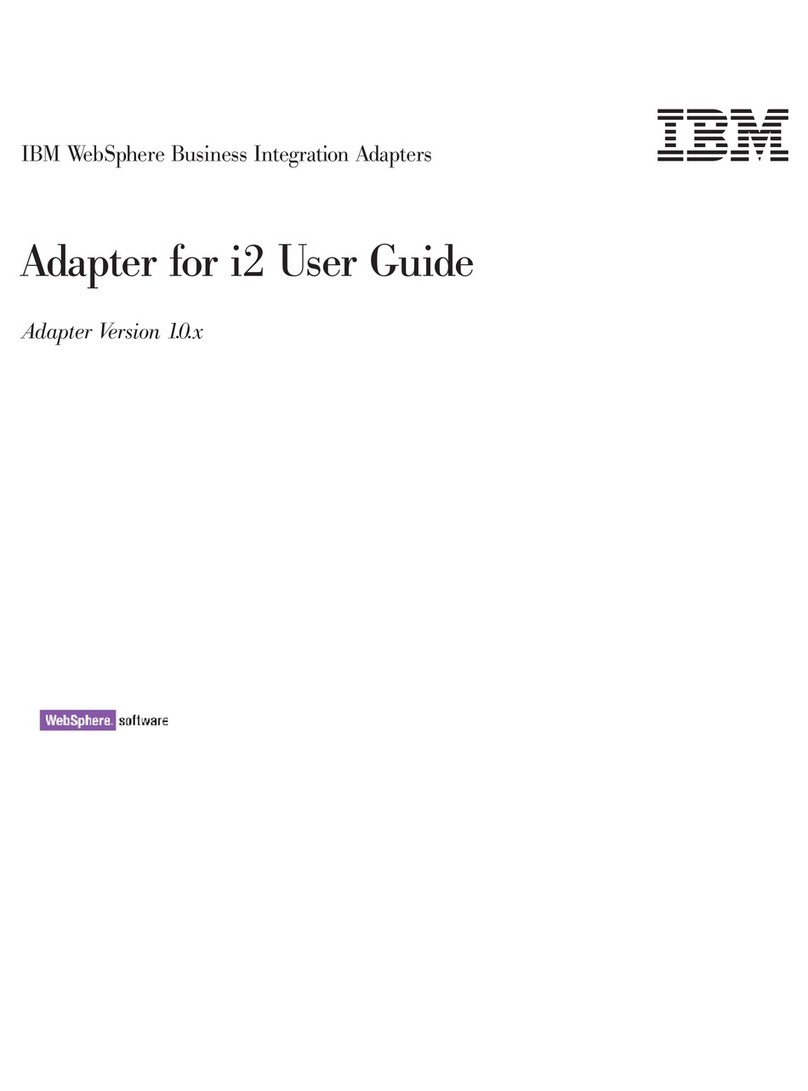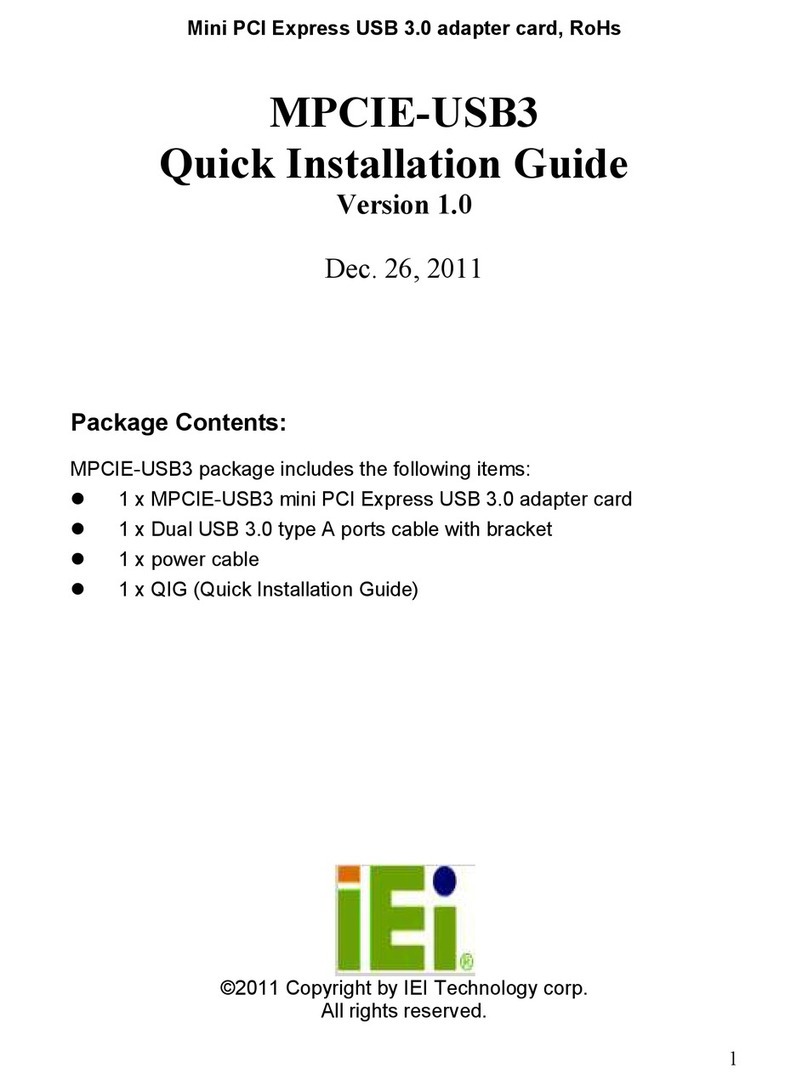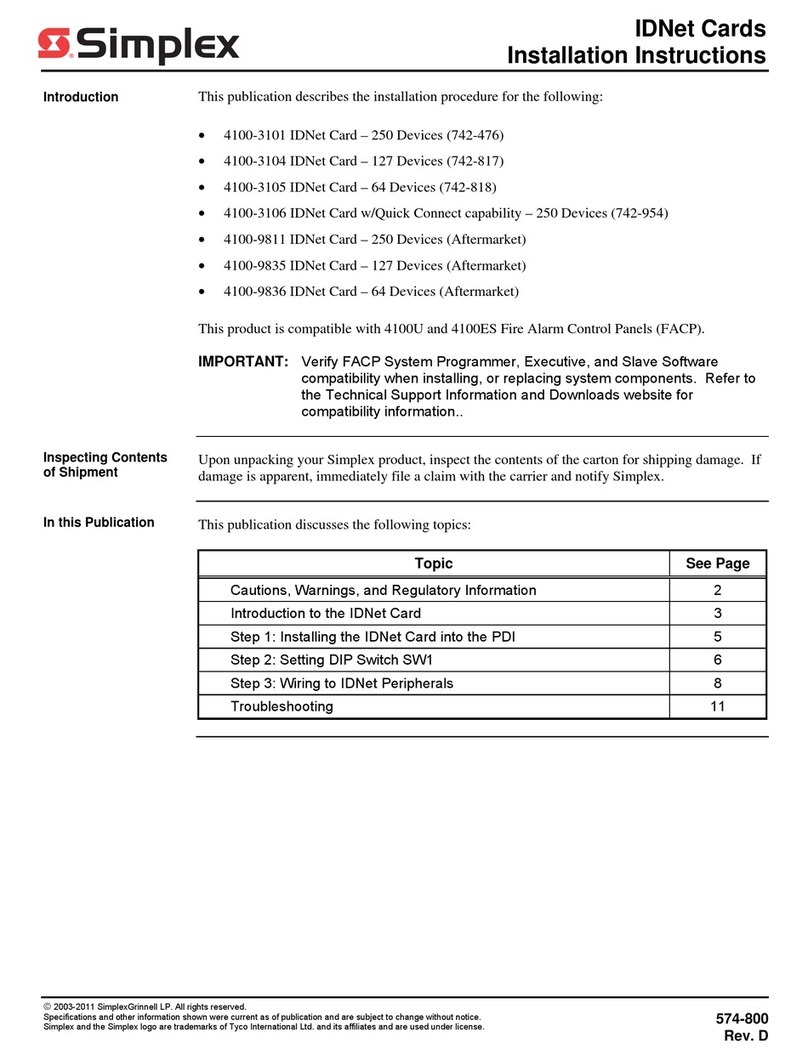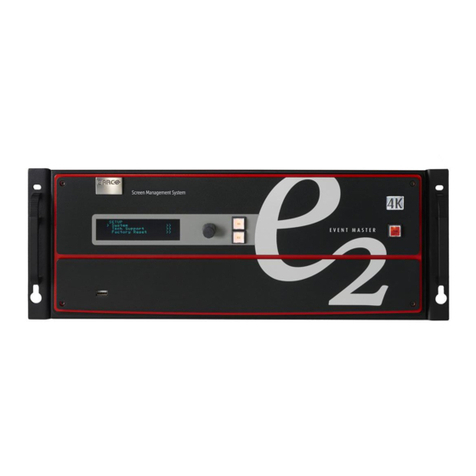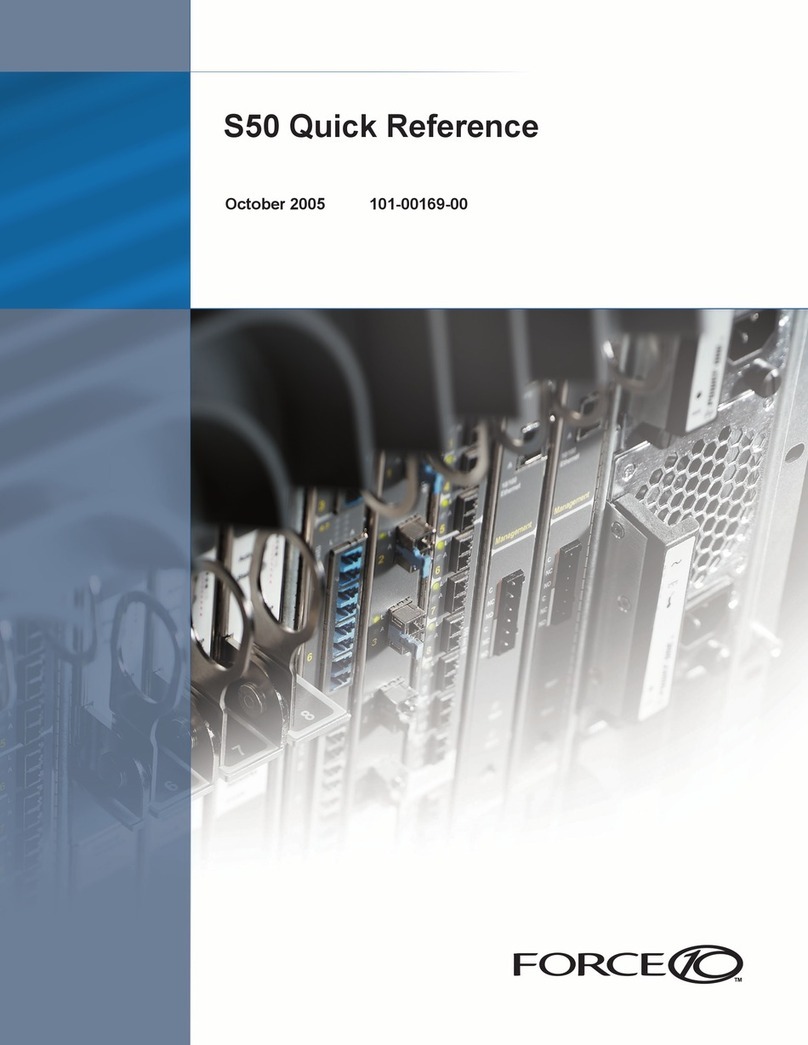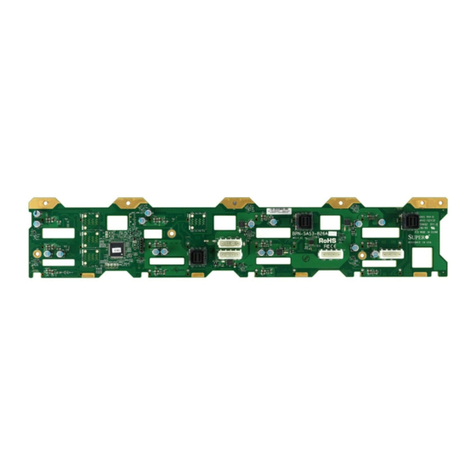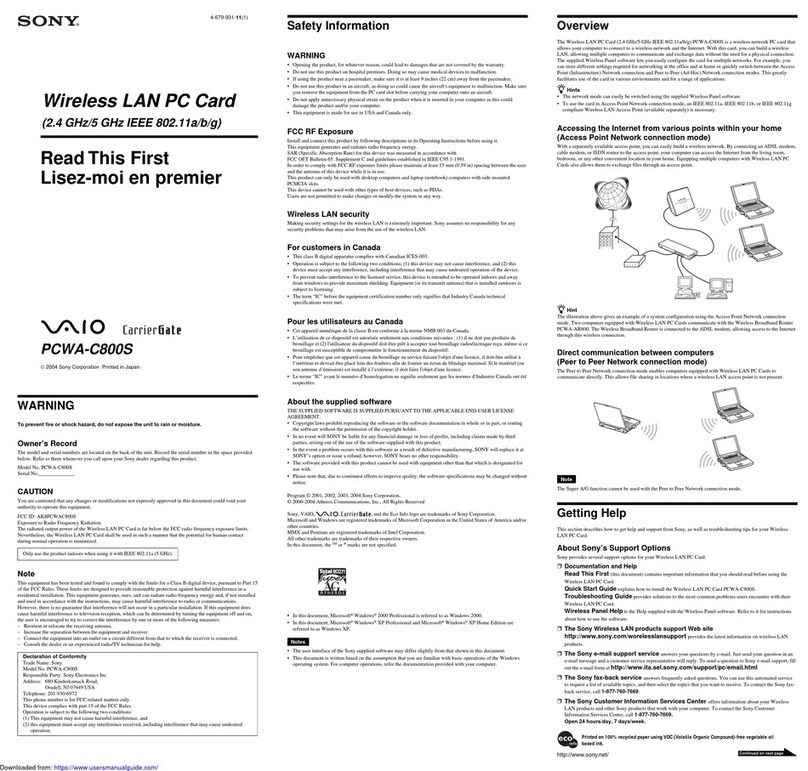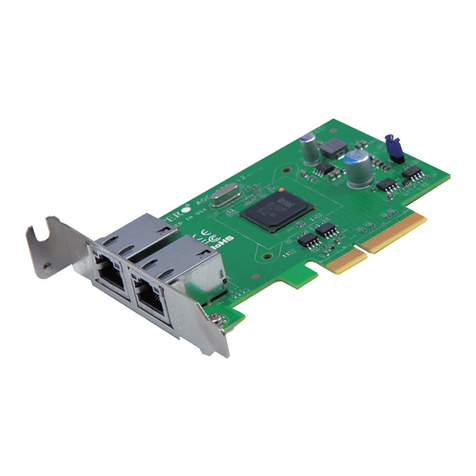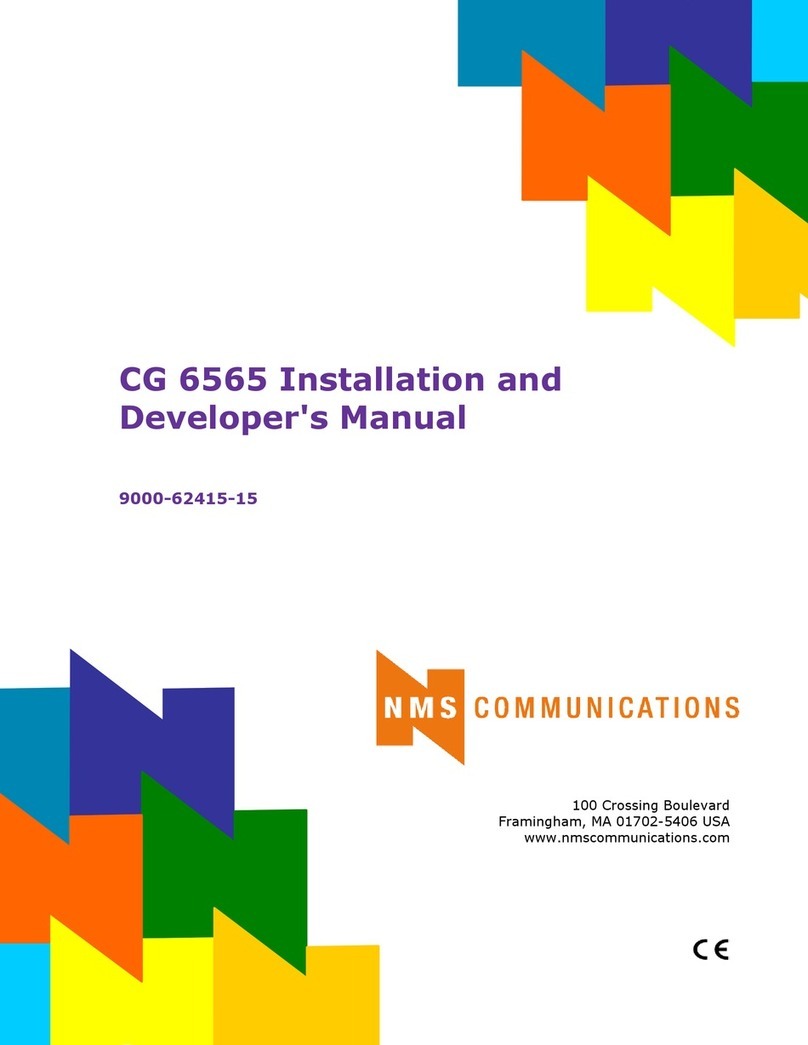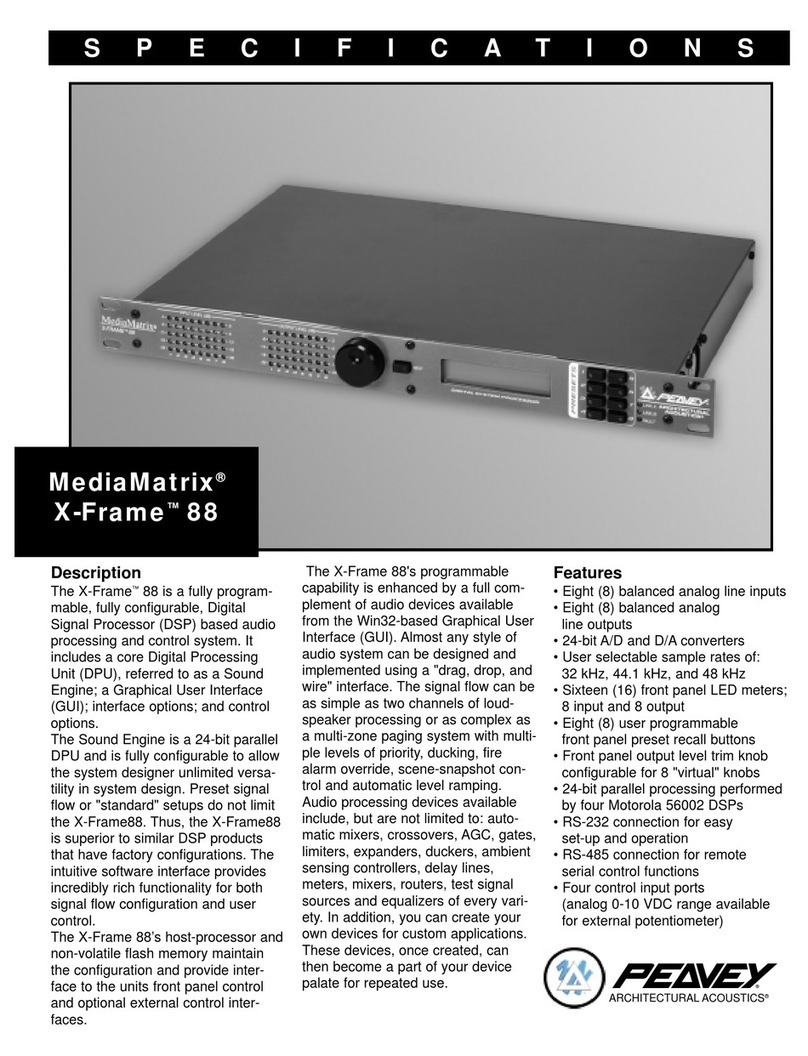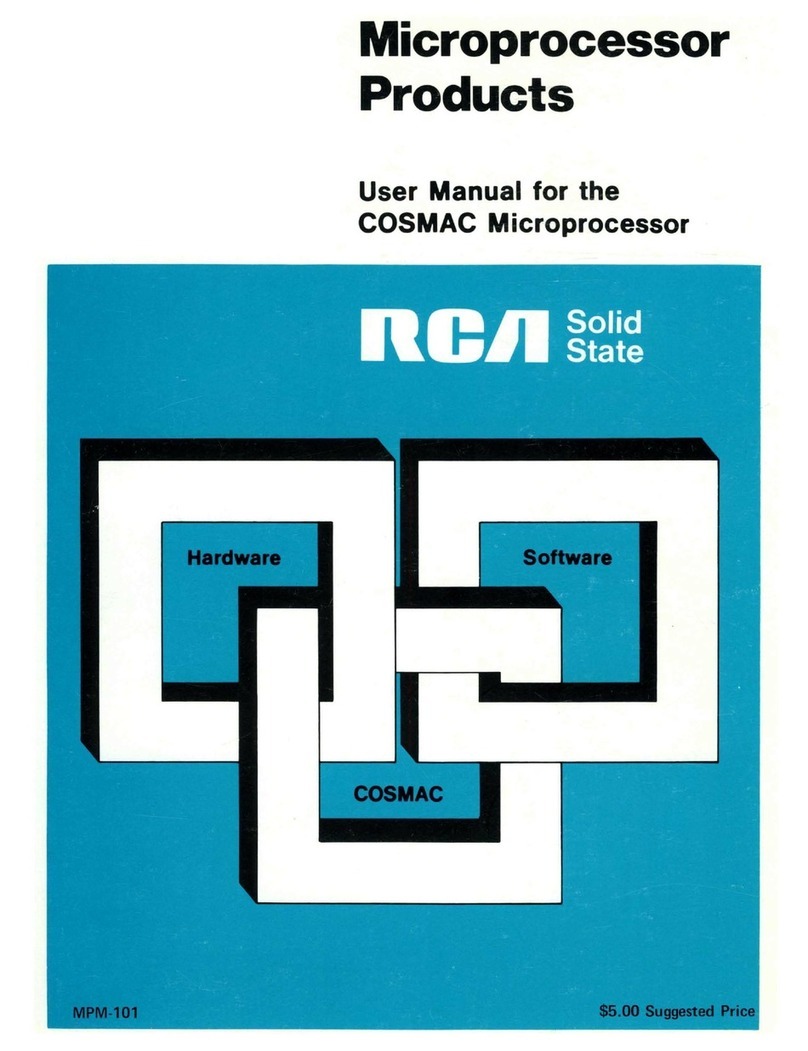FMC Technologies Smith Meter microLoad.net Instructions for use

The Most Trusted Name in Measurement
TCP/IP (Ethernet & SLIP) Communications
Smith Meter™ microLoad.net
Application Manual
Issue/Rev 0.0 (5/06) Bulletin AB06064
Contents
Introduction to TCP/IP Communications and Basic Networking ..............................................................1
Section I – Connecting via Ethernet.............................................................................................................. 2
Configuring the microLoad.net for Ethernet communications.......................................................................2
Configuring Windows 2000/XP for Ethernet Connection to microLoad.net.................................................. 3
Section II - Configuring a SLIP Connection.................................................................................................. 5
microLoad Settings for SLIP Communications .............................................................................................5
PC Settings for SLIP Communications.........................................................................................................6
Section III – Using the TCP/IP Link................................................................................................................ 8
Checking the TCP/IP Connection .................................................................................................................8
Appendix I – Firmware Upgrade Procedure.................................................................................................. 9
Performing the Firmware Upgrade................................................................................................................9
Appendix II – Troubleshooting TCP/IP Communications.......................................................................... 11
Troubleshooting an Ethernet connection ....................................................................................................11
Troubleshooting a SLIP connection............................................................................................................11
Troubleshooting the Firmware Upgrade process........................................................................................12


i
Caution
The default or operating values used in this manual and in the program of the
microLoad.net are for factory testing only and should not be construed as default or
operating values for your metering system. Each metering system is unique and each
program parameter must be reviewed and programmed for that specific metering system
application.
Disclaimer
FMC Technologies Measurement Solutions, Inc. hereby disclaims any and all
responsibility for damages, including but not limited to consequential damages, arising out
of or related to the inputting of incorrect or improper program or default values entered in
connection with the Smith MeterTM microLoad.net.
Proprietary Notice
This document contains information that is proprietary to FMC Technologies Measurement
Solutions, Inc. and is available solely for customer information. The information herein
shall not be duplicated, used, or disclosed without prior permission of FMC Measurement
Solutions.
FMC Technologies Measurement Solutions, Inc. will not be held responsible for loss of
liquid or for damage of any kind or from any cause to the person or property of others, or
for loss or profit, or loss of use, or any other special, incidental, or consequential damages
caused by the use or misapplication of the contents stated herein.


Introduction – TCP/IP and Networking with microLoad.net
AB06064 · Issue/Rev. 0.0 (5/06)Page 1
Introduction to TCP/IP Communications and Basic Networking
It is not necessary to become a skilled network administrator to successfully communicate with the
microLoad.net via TCP/IP. However, some basic networking knowledge will be quite helpful in
establishing and maintaining reliable communications with devices such as the microLoad.net that can be
connected via Ethernet and TCP/IP. Some of the following terms may be encountered while configuring
or maintaining your device connections:
TCP/IP (Transfer Control Protocol/Internet Protocol) is the widely accepted standard protocol for
Internet and World Wide Web communications. Many other Internet standard protocols – HTTP
for Web browsing, FTP for file transfers, etc. – use TCP/IP as the underlying control protocol.
Ethernet:A low-level protocol that implements the hardware link between two or more host
devices. TCP/IP is often used over an Ethernet connection.
MAC Address:A fixed, permanent 6-byte hardware address assigned to an Ethernet device by
the manufacturer.
IP Address:a four-byte (32 bit) number, usually displayed as 4 separate octets (8 bit numbers)
i.e. 192.168.0.1, that uniquely identifies a host and network.
IP address ranges are grouped by class; the first few bits determine the class. Class ‘A’ networks
have a value from 0-127 in the first octet; class ‘B’ networks start with 128-191; class ‘C’ from
192-223. The special values of 224-239 are reserved for class ‘D’ (multicast) addresses, and the
values 244-255 are reserved (class ‘E’) addresses.
Net Mask: The number of bits in the IP address that is used to specify the network address. The
remaining bits specify the host address. A Class ‘C’ network has a net mask of 24 (the first 24
bits are common to all machines on the network, the last 8 bits are the host id and are unique for
each machine on the network). Therefore, a class ‘C’ network can have up to 254 hosts (host
numbers 0 and 255 are reserved by the standard for special features such as broadcasting.) A
very large class ‘A’ network has an 8 bit net mask – leaving 24 bits to specify the host. Hence this
type of network can have a huge number of host machines -224 = over 16 million computers – but
there can only be 255 of those types of networks in existence since there are only 255 unique
network IDs that can be made from 8 bits. So why specify a net mask if it’s implied by the
network class? The reason for a net mask is clear when it is realized that some networks need to
have many more hosts than 255, and that there would not be very many networks if we only
allowed Class ‘A’ networks. Net masks are often written out in octet form… 255.255.255.0 is the
same as saying the net mask is 24 bits. It can also be specified with the network address using a
backslash, i.e. 192.168.0.0/24. So, if we have a machine on that network with the IP address
192.168.0.23 (A class ‘C’ network), the network address is 192.168.0 and the host address is 23.
There are some network addresses that are reserved by the standard as ‘local network’
addresses. These network addresses are allowed only behind a router that ‘hides’ the local
network from the Internet. Many internal internet networks use these addresses: all the class ‘C’
networks starting with 192.168.xxx.xxx/24 and the class ‘A’ network 10.xxx.xxx.xxx/8. Since most
organizations do not require a full class ‘A’ network, often a subsection of the address space is
used, i.e. 10.0.xxx..xxx/16. This is called ‘sub-netting’. Alternatively, sometimes two or more class
‘C’ networks are combined thus: 192.168.0.xxx/23. This is known as ‘super-netting’.
Gateway: a gateway address specifies where outgoing messages addressed to other networks
should be directed. This allows devices like routers, hubs and switches to be specified as the
interface to anything external to the physical network.
There is much information on TCP/IP and networking on the World Wide Web. One such example of a
more detailed description can be found at the time of this writing at http://www.faqs.org/rfcs/rfc1180.html.
This is one of an entire series of RFCs (Request For Comments) that make up the documentation on
networking standards.

Section I – Connecting via Ethernet
Page 2 AB06064 · Issue/Rev. 0.0 (5/06)
Configuring the microLoad.net for Ethernet Communications
Power up the microLoad (wait for microLoad to complete initialization)
Press <Enter> at the Ready screen to access the Main Menu
From the Main Menu, select Program Mode Menu and press <Enter>
Enter the Access Code when prompted and press <Enter>
From the Program Mode menu, select Comm. Directory and Press <Enter>
Select Host Interface and press <Enter>
From the Host Interface Menu set the following items:
IP Address: 192.168.0.1
Net mask: 255.255.255.0
Gateway: 192.168.0.10
Ethernet Control: Poll and Program
Com Link: Level 3
Return to the Main Menu using the <Clear> key
Note: If using the microLoad.net’s Ethernet port, make sure that none of the microLoad.net serial
communications ports are configured to the ‘SLIP (TCP/IP)’ function – configuring a SLIP connection will
disable the Ethernet connection.
It is recommended that the microLoad.net be installed to a private network (not connected directly to the
rest of the corporate LAN). This is best implemented by adding a second network interface card to the PC
that will be interfaced to the microLoads. This dual-interface PC can be set up as a ‘bridge’ allowing all
the other PCs in the corporate environment to reach the microLoad devices (given permission to do so)
but will prevent all other corporate LAN traffic from interfering with the microLoad.net communications.

Section I – Connecting via Ethernet
AB06064 · Issue/Rev. 0.0 (5/06)Page 3
Configuring Windows 2000/XP for Ethernet Connection to microLoad.net
Requirements:
A Network Interface Card (NIC) installed in the PC and either:
oa CAT-5 ‘crossover’ cable;
or alternately
otwo regular CAT-5 cables, and an Ethernet hub/switch/router such as those
manufactured by D-Link, LINKSYS, 3Com, et. al.
Your PC has a NIC interface if there is an Ethernet port (CAT-5 connector) present on the back of the
computer. Most modern PCs have the Ethernet hardware integrated on the motherboard. Typically these
ports are labeled with a network icon: If there is no Ethernet hardware in your PC you can add one –
they are relatively inexpensive and easy to install. Another option is to use a SLIP connection (see the
section later in the manual on SLIP).
There are two ways to connect the microLoad to your PC using Ethernet – either machine-to-machine,
using a crossover cable; or connecting both the PC and the microLoad to a multi-port network device
such as a hub, switch or router.
If using a crossover cable, plug one end of the cable into the Ethernet port on the PC. If using a hub,
connect the PC’s Ethernet port to one of the router’s ports using a standard cable.
At the microLoad.net, remove the cover and find the CAT-5 connector (CN8) on the back of the MNET
board (the main board, attached to the cover). Plug the other end of the crossover cable in here, or if
using a hub connect the second standard CAT-5 cable between the microLoad.net and another port on
the hub. The microLoad has two LEDs near CN8 – the green LED will light if the physical connection is
established properly. The yellow LED will blink when traffic appears on the network.
Note: If the system is currently on a network, be sure to record all values prior to changing the connection
settings so the network connection can be restored to the original state.
Configuring the PC’s settings for Ethernet communications with the microLoad.net:
Click on Start Menu > Settings > Network Connections > Local Area Connection

Section I – Connecting via Ethernet
Page 4 AB06064 · Issue/Rev. 0.0 (5/06)
►
Uncheck all of the boxes EXCEPT the check box for “Internet Protocol (TCP/IP)”
Make sure that the “Internet Protocol (TCP/IP)” line is selected then click ‘Properties’
Select “Use the following IP address”
Enter an IP address on the same network as the microLoad, i.e. 192.168.0.10
(Make sure the host address is different than the microLoad.net!)
Enter the subnet mask: 255.255.255.0
Click OKAY when finished
Click OKAY again to exit the Local Area Connection dialog
Continue with the section titled Establishing and Verifying a Successful Connection

Section II – Configuring a SLIP Connection
AB06064 · Issue/Rev. 0.0 (5/06)Page 5
Configuring SLIP Communications (Available with Windows 2000/XP Only)
If an Ethernet connection is not available or distances prevent the use of Ethernet, the microLoad.net can
also support TCP/IP communications over one of the serial ports. This is implemented via SLIP (Serial
Line Internet Protocol) support in the microLoad.net.
Note: Skip this section if using Ethernet. Continue with the section titled Establishing and Verifying a
Successful Connection
Remove cover and connect the microLoad communications port to the PC serial port using a serial
communications line. (microLoad.net Comm 1 is used in the example.) Wire the serial connection as for
any other serial protocol. (For instructions on connecting the microLoad to the PC via serial
communications please refer to the installation manual for the microLoad.)
microLoad.net Settings for SLIP Communications
Power up the microLoad.net (wait for microLoad to go through its initialization period ie. RAM and
ROM test)
Press <Enter> from the ready screen to access the Main Menu
Once in the Main Menu screen, select Program Mode Menu and press <Enter>
Enter the access code when prompted and press <Enter>
Select Comm. Directory and Press <Enter> from the Program Mode Menu
From Comm. Directory select the Comm. Port Config and press <Enter>
Select Comm. 1 and press <Enter>
From Comm. 1 Directory, select the following items and set as indicated below:
Function: SLIP (TCP/IP)
Baud: 38,400
Data Parity: 8/None
Timeout: 0
Mode: RS232
After ALL items from above are set, press <Clear> twice to return to the Communications
Directory Menu
Select Host Interface and press <Enter>
From the Host Interface Menu set the following Items as indicated below:
IP Address: 192.168.0.1
Network:255.255.255.0
Gateway: 192.168.0.1
Ethernet Control: Poll and Program
Com Link: Level 1
Note: SLIP is a point to point protocol and is not intended for multi-dropped serial networks. It is possible
to utilize a SLIP connection in a multi-drop environment for special features such as firmware upgrades,
but any additional microLoad.net devices on the communications line must have the serial port
functionality disabled before attempting to connect to any one unit.

Section II – Configuring a SLIP Connection
Page 6 AB06064 · Issue/Rev. 0.0 (5/06)
PC Settings for SLIP Communications
Click on Start > Settings > Network Connections > New Connection Wizard:
In the New Connection Wizard, perform the following steps:
oSelect <Next> on the “Welcome to the New Connection Wizard” page)
oSelect “Set up an Advanced Connection”, from the list then click <Next>
oSelect “Connect directly with another computer”, then click <Next>
oSelect “Guest”, then click <Next>
oIn the text box, type in “microLoad via SLIP” or something identifiably unique
oSelect “Communications cable between two computers (Com 1)” when the wizard
prompts for a device selected. Click <Next>
oClick on “Anyone’s Use” for connection availability. Click <Next>
oClick <Finish> on the Confirmation page of the Wizard
Upon completion, a new screen will pop up automatically with the title “Connect to microLoad via
SLIP”
Click <Properties>
oIn the General tab, select “Communications cable between two computers (COM n)”.
Verify the selection corresponds to the desired port.
oClick on the <Configure> button located on the same screen (below the selected device).
Set the baud rate to 38400. In the hardware features verify that all boxes are unchecked.
Click <OK> to return to the Properties dialog.
►

Section II – Configuring a SLIP Connection
AB06064 · Issue/Rev. 0.0 (5/06)Page 7
Click on the Options tab. Un-check the “Prompt for name
and password, etc.” box. The other options can be left the
same.
Click on the Networking tab.
oFrom the drop down menu for the type of dial
up server I am calling, select “SLIP: UNIX
Connection”
oClear all checkboxes except for Internet
Protocol (TCP/IP) and QoS Packet
Scheduler.
oSelect “Internet Protocol (TCP/IP) ” in the list
box and click <Properties>
A new window will appear that is labeled “Internet
Protocol (TCP/IP) Properties”
oSelect “Use the following IP address”
oSpecify an address that is DIFFERENT
from but on the same subnet as the
microLoad you are using
For example, if the microLoad is configured
for 192.168.0.1, set the PC to 192.168.0.5, or
192.168.0.10, etc.
Click <OK> to exit the dialog then click <OK> at the bottom of the microLoad SLIP Connection Properties
window. If all is configured correctly, the dialog should report ‘connected’ and the link will be established
successfully.

Section III – Using the TCP/IP Link
Page 8 AB06064 · Issue/Rev. 0.0 (5/06)
Using the TCP/IP Link
Checking the TCP/IP Connection
Install the latest version of the microMate software. This can be found on the World Wide Web – go
to http://www.microLoad.net. It is recommended that the installation defaults be used, resulting in the
program being installed to the directory C:\Program Files\Smith Meter\microMate for microLoad.net.
After installation, perform the following steps to check the connection you established:
Launch the microMate application from the Start menu
Select Options | Options for this microLoad from the microMate menu.
Enter the IP address you programmed into the microLoad.net (i.e. 192.168.0.1)
In the ‘Port’ combo box, choose TCP/IP. (This selection is at the top, above Com 1)
Click “OK”. If communications is established, the status bar at the bottom of the microMate
window should indicate a successful connection with the word “ONLINE”. (Note: the status
may appear as “Read Only”, which also indicates the connection was successful; this will
occur if the microLoad.net is in program mode via the keypad, or configured so that Program
Mode access through communications is disabled.)
If the microMate application times out and fails to connect, consult Appendix II – Troubleshooting for
assistance with debugging the connection.
With the microMate you can read and write program codes, use the Terminal Emulator to send any of the
available commands to the microLoad, read transaction and event logs, and upload special features like
user configured reports, displays, translations, and equations. See the online help file for the microMate
application for help on utilizing all of the microMate features.
Also available via the TCP/IP link is a very simple Web interface. By launching your browser and entering
the IP address of the microLoad.net for a URL (i.e. http://192.168.0.1), you can access this interface.
In addition, the microLoad.net had built-in FTP support. This is the mechanism used to perform firmware
upgrades, transfer configuration items such as user equations and translations, and add additional
custom HTML pages. The FTP implementation is complete enough to work satisfactorily with a command
line FTP utility.

Appendix I – Firmware Upgrade Procedure
AB06064 · Issue/Rev. 0.0 (5/06)Page 9
Appendix I – Firmware Upgrade Procedure
The microLoad.net has flash EEPROM based internal non-volatile memory; this allows the device to be
upgraded without opening the housing and replacing EPROMs as in the past. To take advantage of this
ability, the boot loader in the microLoad.net supports firmware upgrades via TCP/IP.
The microMate must be upgraded first before performing the firmware upgrade. The microMate
application validates the firmware image prior to permitting the download. Visit the website at
http://www.microLoad.net to check for newer revisions.
The boot loader ALWAYS uses 192.168.0.1 as the IP address. Before performing a firmware upgrade
make sure that IP address is available and the host machine is on the same network (192.168.0.x). If
your Ethernet network uses a different network address, it will be necessary to remove the microLoad
that is to be upgraded from the network, configure it for that network address, and configure the PC to
connect to it. (Note: this may not require physical disconnection from the network, only reconfiguring the
two devices.) The microMate will know to use 192.168.0.1 to perform the upgrade and can handle
switching host addresses, but this will only work if the original microLoad.net address is in the range
192.168.0.1 – 192.168.0.254.
Performing the Firmware Upgrade
With the microMate application is in ONLINE mode and communicating, select Tools | Upgrade Firmware from
the menu. Program mode access is required for the upgrade, so READ ONLY access is not sufficient.
The microMate will display a text message that says “This process erases all nonvolatile memory in the
microLoad (configuration, reports, equations, etc… continue?”.
IMPORTANT:
BE SURE YOU HAVE SAVED A COPY OF THE PROGRAM CODE CONFIGURATION BEFORE
PROCEEDING, ALONG WITH SAVING ANY ADDITIONAL CONFIGURATION ITEMS SUCH AS
ONFIGURABLE REPORTS, USER EQUATIONS, ETC. IN USE!
Select “OK” to continue the upgrade process, or “Cancel” to abort.
If the PC running microMate has an Internet connection, the firmware image will be downloaded
automatically from the FMC Technologies servers. If Internet access is not available or this step fails,
the message “Unable to access host server to check for newer revisions” will be displayed and the
image must be manually placed in the application directory.
Default location: C:\Program Files\Smith Meter\microMate for microLoad.net\ULOAD.BIN
oIf you have manually placed the ULOAD.BIN image file in the application directory, you will
still see the error message above; this is normal and should not affect the upgrade process.
oIf after either a successful download or the manual placement of a firmware image, the
microMate still fails to find a valid ULOAD.BIN file in the application directory, a message
indicating “No new application image found… aborting” will be displayed and the upgrade will
be aborted.
oNote: if the file exists as indicated above and the microMate still fails to find the image, save
the data file you are currently using (the ‘*.ml’ file) to the application directory and retry.
Having the data file in a different directory can affect the file search. Also make sure the
original microMate installation was to the default path. (Replace the default path above with
the actual installation path if different.)
Once the microMate has located the ULOAD.BIN file, it will validate the file. If the file is not
recognized by the microMate or is determined to be a revision older than the one currently installed in

Page 10 AB06064 · Issue/Rev. 0.0 (5/06)
the microLoad.net, the upgrade will be aborted. (Note: down-grading is possible; see the information
or forcing the microLoad to power up into the boot loader manually in Appendix II – Troubleshooting.)
oDuring the validation step, the message “Preparing microLoad.net for upgrade process…” will
be displayed.
You will be asked to enter the access code for the highest security level. Again, you must have
program mode access through communications to perform the upgrade. Enter the access code and
press <Enter> or click “OK”. An invalid access code will abort the upgrade process.
If the microLoad.net currently online is not programmed for 192.168.0.1, the microMate will check for
another device on the network using that IP address (the default address of the boot loader). If
another device responds the upgrade will be aborted since that address needs to be available for the
boot loader to use.
If all the above steps complete successfully, the microMate will issue the command to force the
microLoad.net into the boot loader remotely. The message “Allowing microLoad.net to boot into RAM
Executive, please wait” will be displayed.
Select ‘OK’ when prompted to begin the download. You will see the following text displayed on the
microMate:
o‘Erasing existing application memory (flash)…’
o‘Initiating application image download…’
o‘Downloading image…’
The download process may take from 2 to 10 minutes (SLIP is usually significantly slower than
Ethernet). When the download is successfully completed, the following messages will appear:
o‘Allowing microLoad.net to restart with new image...’
o‘Transfer completed. The microLoad will be factory initialized.’
After successfully upgrading, the unit will have to be re-configured for operation. The communications
settings (IP address, etc.) may have to be configured manually, but once that is completed the microMate
can easily restore the remaining configuration items (program code configuration, equations, reports, etc.)
If the upgrade fails prior to the ‘Erasing existing application memory (flash)…’ message, power cycling the
microLoad.net should result in restoring the state of the device prior to attempting the upgrade. If the
upgrade fails for some reason after the erasing step, see the troubleshooting guide for assistance on
interfacing with the boot loader / RAM executive on the microLoad.net manually.

Appendix II – Troubleshooting
AB06064 · Issue/Rev. 0.0 (5/06)Page 11
Appendix II – Troubleshooting TCP/IP Communications
Troubleshooting an Ethernet Connection
LED Indicators
The Link indicator on the Ethernet port (the green LED in top corner of microLoad.net main [MNET]
board) is a simple indication of the correct wiring of the physical connection. Most PC and router ports
also have a visible indicator when the connection is wired properly. If the Link light does not
illuminate, either the cable is the wrong type (i.e. a standard CAT-5 cable was used when a crossover
cable is needed or vice versa), the cable is faulty, or one of the RJ45 connector plugs is not inserted
completely into the jack. It is also possible but unlikely that one of the device ports has failed.
Eliminate the simplest first: double-check that the plugs are inserted fully; and that the cable type is
correct. You can often verify that a cable is standard (or not) by holding the two connectors from each
end of the cable together and viewing the wire colors within (most RJ45 connectors are clear plastic).
If the color pattern on the wires is identical on both ends of the cable, it is a standard cable.
PING Utility
To check the connection, Windows and most other network-able computers provide a low-level utility
called PING that issues a simple ICMP message to a remote device and awaits a response. To use
this utility in Windows, open a Command Prompt (DOS box) and type the command:
C:> PING 192.168.0.1
If the connection is successful, PING will report the total time from command to response. If it fails, a
timeout message will be displayed.
Advanced – Ethernet Diagnostic (Packet Sniffer) Utility
A useful tool for troubleshooting network communications is a packet sniffer. This type of utility
provides a mechanism to display the traffic being sent/received from the Ethernet port, and to dig
down to the lower levels to view MAC addresses and IP packet data.
An open source implementation of a packet sniffer utility, Ethereal, is available and can be
downloaded from the Web at http://www.ethereal.com/. There are versions for Windows, Linux and
other platforms as well.
Troubleshooting a SLIP Connection
Using the Comm Monitor Diagnostic
The microLoad.net has a built-in diagnostic that displays traffic on the serial communications ports.
To access the Comm Monitor diagnostic, select Diagnostics Menu from the Main Menu, then scroll
using the arrow keys until the Comm Monitor selection is highlighted and press <Enter>. Then select
the communications port (1-3) that was configured for the SLIP connection. By examining the traffic it
is possible to determine if data is being received from the PC end, and whether a response is being
issued. You can ‘freeze’ the display, and scroll back and forth, and toggle ASCII and hex mode views
of the last 255 characters in the communications buffer.
CLIENT/CLIENTSERVER Handshake
When establishing a SLIP connection between two devices, Windows uses a non-standard
handshake to verify the device on the other end of the connection is compatible. Windows opens the
port and immediately sends the text “CLIENT” out the port, then waits for a response. Only the
response “CLIENTSERVER” will be accepted by Windows and allow the connection to be made. This
handshake should happen quickly and it will be visible on the Comm Monitor at least briefly if all is
functioning properly. If the Comm Monitor shows repeated CLIENT messages with no
CLIENTSERVER response, it is possible you have the IP addresses incorrect on one side or the

Page 12 AB06064 · Issue/Rev. 0.0 (5/06)
other. The host PC’s IP address should be different than the microLoad.net, but again both
addresses must be on the same network.
Checking the PC Serial Port Settings
If when viewing the Comm Monitor diagnostic there appears to be data arriving at the microLoad but
it seems illegible or garbled, perhaps there is a mismatch in the baud rate/parity settings. You can
verify the port settings by examining the properties in the SLIP connection settings. You can also
check them via the command line. Shut down the SLIP connection, then from a command prompt,
type the following command:
C:> MODE COM1:
This command will display the current port settings for the COM port specified. You can also modify
the port settings using this command:
C:> MODE COM1:38400,N,8,1
This utility may can be useful for troubleshooting microMate serial communications as well.
Troubleshooting the Firmware Upgrade Process
Locating New Firmware Image
The most direct method to access the latest firmware is to download and install the latest microMate
application from the http://www.microLoad.net website. Once the latest microMate is installed,
configure (or open) a data file that uses a TCP/IP connection to the microLoad and then select
Upgrade Firmware. The microMate will attempt to retrieve the latest firmware image from the Internet
and place it in the application directory. You can perform this operation from any Internet-enabled PC,
it does not have to be connected to the microLoad.net for the firmware retrieval process portion of the
upgrade to be performed.
Automated Upgrade Process Fails – Unable to Locate Firmware Image
This message will be displayed if the host PC running microMate does not have Internet access or if
for some other reason the FMC Technologies server or firmware image file is unavailable. This
message can be ignored if the firmware image has been received via email or other means and
manually placed in the application directory.
Automated Upgrade Process Fails – Other Message Indicated
If it is desired to install an OLDER revision of
firmware than that currently installed (not
recommended), or if the microLoad fails to go into
the “Waiting for Firmware Upgrade” state when
commanded remotely to do so by microMate, it can
be forced to power up into the boot loader/ RAM
executive by performing the following steps:
Remove the cover from the microLoad and find
switch S2 (1-8) as illustrated below
Move switch S2-2 (the second DIP switch from
the top) to the ON position.
Power cycle the microLoad. The display will then
read “Waiting for Firmware Upgrade”
Perform the upgrade procedure as described in
Appendix I
Return switch S2-2 to the OFF position

Appendix II – Troubleshooting
AB06064 · Issue/Rev. 0.0 (5/06)Page 13

The specifications contained herein are subject to change without notice and any user of said specifications should verify from the manufacturer that the
specifications are currently in effect. Otherwise, the manufacturer assumes no responsibility for the use of specifications which may have been changed and are
no longer in effect.
Headquarters:
1803 Gears Road, Houston, TX 77067 USA, Phone: 281/260-2190; Fax: 281/260-2191
Gas Measurement Products:
Houston, TX USA Phone 281/260-2190
Thetford, England Phone (44) 1842-82-2900
Kongsberg, Norway Phone (47) 32/286-700
Buenos Aires, Argentina Phone 54 (11) 4312-4736
Integrated Measurement Systems:
Corpus Christi, TX USA Phone 361/289-3400
Kongsberg, Norway Phone (47) 32/286-700
San Juan, Puerto Rico Phone 787/274-3760
United Arab Emirates, Dubai Phone 971 +4/331-3646
Liquid Measurement Products:
Erie, PA USA Phone 814/898-5000
Los Angeles, CA USA Phone 661/702-8660
Slough, England Phone (44) 1753-57-1515
Ellerbek, Germany Phone (49) 4101-3040
Barcelona, Spain Phone (34) 93/201-0989
Moscow, Russia Phone (7) 495/564-8705
Melbourne, Australia Phone (61) 3/9807-2818
Beijing, China Phone (86) 10/6500-2251
Singapore Phone (65) 6861-3011
Chennai, India Phone (91) 44/450-4400
Visit our Web site at www.fmctechnologies.com
Printed in U.S.A. © 5/06 FMC Technologies Measurement Solutions, Inc. All rights reserved. AB06064 Issue/Rev. 0.0 (5/06)
Table of contents
Popular Computer Hardware manuals by other brands
Freescale Semiconductor
Freescale Semiconductor MPC8569E-MDS-PB Hardware Getting Started Guide

Avid Technology
Avid Technology Snake Card user guide
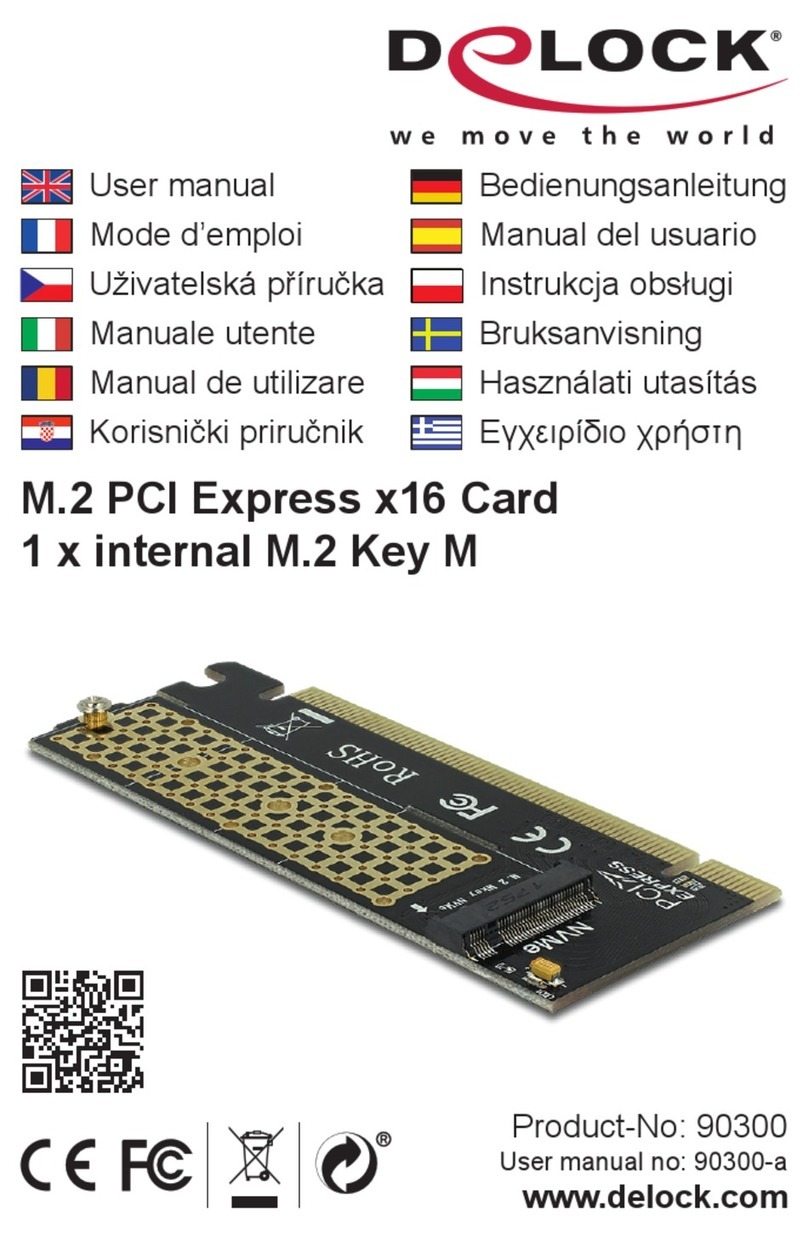
DeLOCK
DeLOCK 90300 user manual
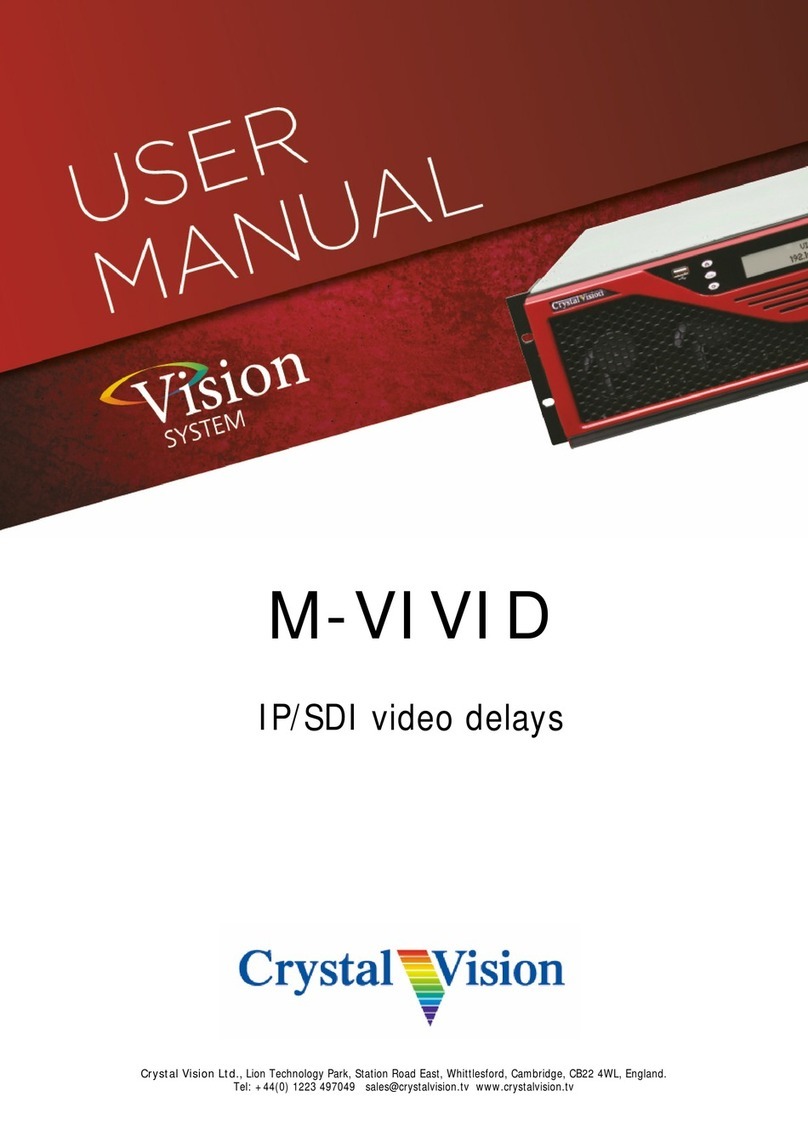
Crystal Vision
Crystal Vision Vision M-VIVID user manual

Atmel
Atmel SAM W25 Xplained Pro user guide

FabiaTech
FabiaTech FX5640 Series Users Quick Reference
